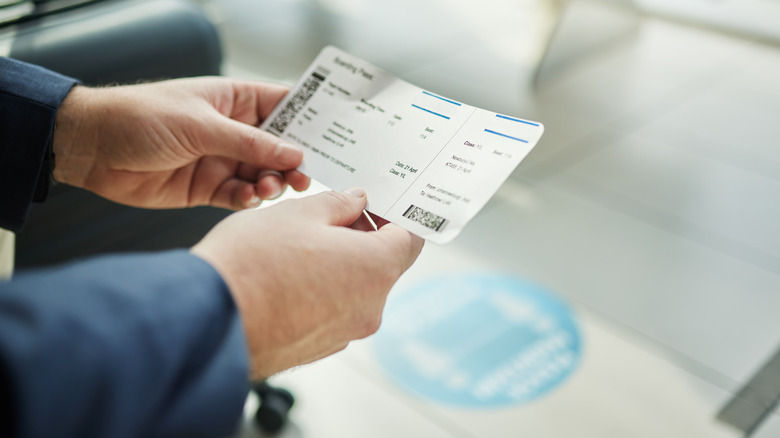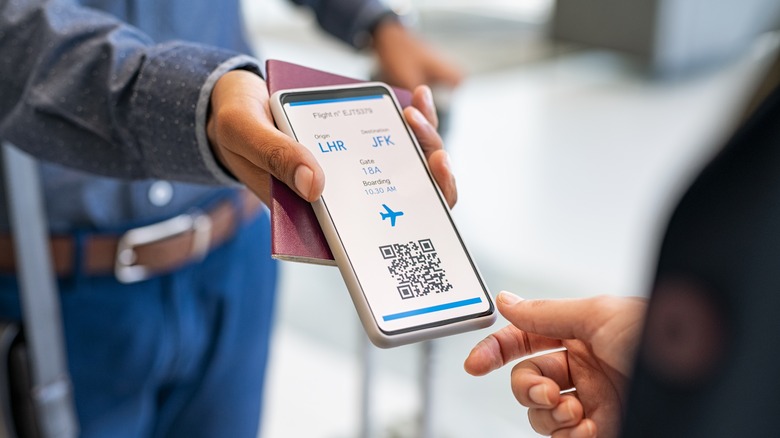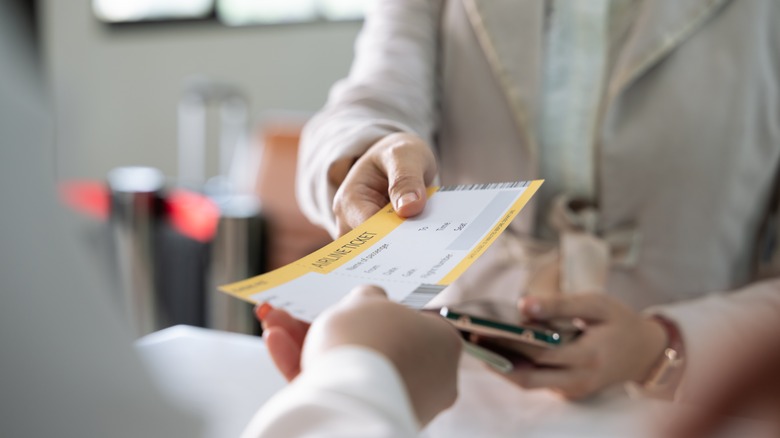Here's What That FQTV Code On Your Boarding Pass Really Means
With the digitalization in travel these days, you might not have paid much attention to all the markings on your boarding pass. If you look closely, though, you'll see the self-explanatory details that signify your departing and arriving airports, dates, times, flight numbers, and seat location. It will also include your name, that of the airline, and your ticket number, along with a barcode you scan as you enter the plane. But often, there will be another section with a number you might not recognize. It may be labeled "FQTV," which is a shortened version of frequent traveler. You might see the acronym on your purchase receipt and flight confirmation in your email or on your travel app. Similarly, it may also appear on your paper or mobile boarding pass.
A FQTV designation doesn't necessarily mean you fly frequently. It just indicates that you've signed up for a frequent flyer program with the airline. The initial FQTV will be followed by a series of numbers and/or letters, which indicate your assigned frequent flyer number. Some of the numbers may be redacted for privacy. Sometimes, the number can be associated with a frequent flyer program from another airline, and still, other times, it won't appear at all. It depends on the airline, the type of boarding pass, and your choices.
To appear or not to appear ... that's the FQTV question
Boarding passes vary from airline to airline. Some provide very basic information, and others include a plethora of data. There's no mandate that your boarding pass must contain the FQTV number and it's up to the airline as to whether it's standard practice to include it on your boarding pass. Even if it doesn't print on the paper, your frequent flyer number is part of your passenger name record (PNR), which is your digital profile with the airline.
Your FQTV number may appear on your boarding pass, which we always think is best to just print in case of issues with your phone or app. However, you might find the number on your boarding pass doesn't correlate with the airline you're flying. This is because you can sometimes choose to fly one airline while earning frequent flyer credits with a partner airline. For example, you might fly Delta, but credit your miles to your Air France frequent flyer account, and vice versa (since they have a partnership). Additionally, if you link your airline with whom you have elite status to a partner flight, they will sometimes "status match," which means you can have access to lounges, get your checked luggage comped, and other benefits, even if you haven't been able to find the best deal on a first-class flight.
Other tidbits about the boarding pass
If, after reading this, you're now trying to hunt down your boarding pass for an upcoming flight, you should understand the difference between a ticket and a boarding pass. A ticket, now commonly referred to as an e-ticket, is issued when you book your flight. You'll usually see a ticket number on it when you receive your confirmation of purchase. It's kind of like a receipt. A boarding pass, on the other hand, is the document you need in order to actually get on the plane. It is issued after you check in for your flight. You can have a paper boarding pass printed, or you can use a digital boarding pass on your mobile phone, which provides a QR code you scan as you board.
There may be other codes to be aware of once you do get that boarding pass in your hands. For example, if you want to know what it means when you see "SSSS" on your boarding pass, plan to spend some extra time in the security line. This is an indicator that you'll undergo additional screening.
While an FQTV account number may or may not appear on your boarding pass, membership can be an essential tool for earning elite status at an airline or for earning free flights. Programs are typically free to sign up for, but you'll need to subscribe to each airline's program separately.


